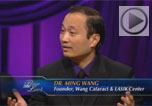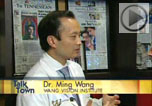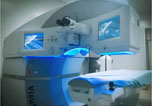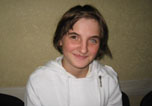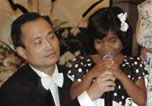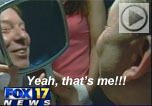- Over 55,000 LASIK and cataract procedures (including on over 4,000 doctors)
- The FIRST center in TN to offer Laser Cataract Surgery
- Introduced bladeless all-laser LASIK to the state
- Implanted the state's first FOREVER YOUNG™ Lens
- The first surgeons in the US to perform a new Intacs surgery to treat keratoconus
- Helped patients from 40 states and 55 countries
- International referral center for cataract surgery and LASIK complications
- Read Dr. Wang's book: LASIK Vision Correction
Why did you decide to have LASIK? Why did you choose Dr. Wang? How has your life changed since your LASIK procedure?
What is your advice for people considering LASIK?
Click to read more
| Home | Print This Page |
Wang Vision 3D Cataract and LASIK Center, Nashville, Tennessee
BY HOLLY CONNER SHARP
Saturday, April 29, 2006

|
As of December 2005, the STAAR Visian (ICL)T is the second FDA-approved implantable contact lens in the United States, and it's battling the VerisyseT phakic intraocular lens (IOL) for top market share for extremely nearsighted patients. These new ICLs are specifically designed to correct vision for very nearsighted people who are not candidates for laser procedures.
Like Verisyse, the Visian ICL is best for distance correction for people with moderate to high nearsightedness, but the Visian sits behind the iris and requires a smaller incision to implant than the Verisyse. Dr. Jim Loden performed the first Nashville implant this February. The procedure requires a 3 mm incision into the cornea and according to Loden, "often takes less than 10 minutes to perform. Generally, the patients have 80-90 percent vision restoration within the first 24 hours."
Dr. Loden says the ideal Visian ICL candidate is 21-50 years old with -6 myopia and higher. The procedure is completely reversible and can be done in less time than the original implant procedure itself.
"With Visian ICL, there is no altering or removing any eye tissue, so if you don't like it, it can be easily removed," explains Loden.
In laser surgeries, corneal tissue is permanently removed reshaping the eye for better vision. "Patients with high myopia would require too much corneal tissue to be removed making LASIK out of the question, but with Visian these very nearsighted patients have an option," adds Loden.
That was the case for Loden patient Roger Ray of White House, Tenn., whose best corrected vision before the Visian ICL was 20/40. Ray said he was told the LASIK "would require too much scraping of his cornea," so when he learned about the Visian, he was very interested. "I now see 20/20," Ray says of the procedure. Alan Judd notes marked improvement in his eyesight as well; however, he adds, "There was slight discomfort while my eye acclimated to the new lens."
Dr. Ming Wang of the Wang Vision 3D Cataract and LASIK Center prefers the Visian because it is placed in the posterior chamber of the eye behind the iris, in front of the lens. According to Wang, "This location is preferable to that of the Verisyse because the Verisyse attaches to the iris behind the cornea, which can cause problems with the cornea in younger patients who need to have the lens there for years and years, and in some cases, the back surface of the cornea can decompensate from irritation of the anterior chamber lens."
Finally, just when you thought you had the scoop on the latest implantable contact lens, there's another one just around the bend. Dr. Jeffrey D. Horn of Vision for Life in Nashville is the principal investigator in an ongoing trial for a new Alcon lens. Horn believes the perfect lens is not available yet. He explains, "The Visian may sit too close to the human lens which can lead to cataract formation, while the Verisyse's larger incision may lead to astigmatism along with the unknown, possibly negative effects of clipping the lens to the iris." Horn says the Alcon lens, which is still undergoing phase III testing, requires a small incision, sits in front of the iris and does not require clipping. He adds, "It too is removable and reversible."
Our new texbooks
A 501c(3) charity that has helped patients from over 40 states in the US and 55 countries, with all sight restoration surgeries performed free-of-charge.



